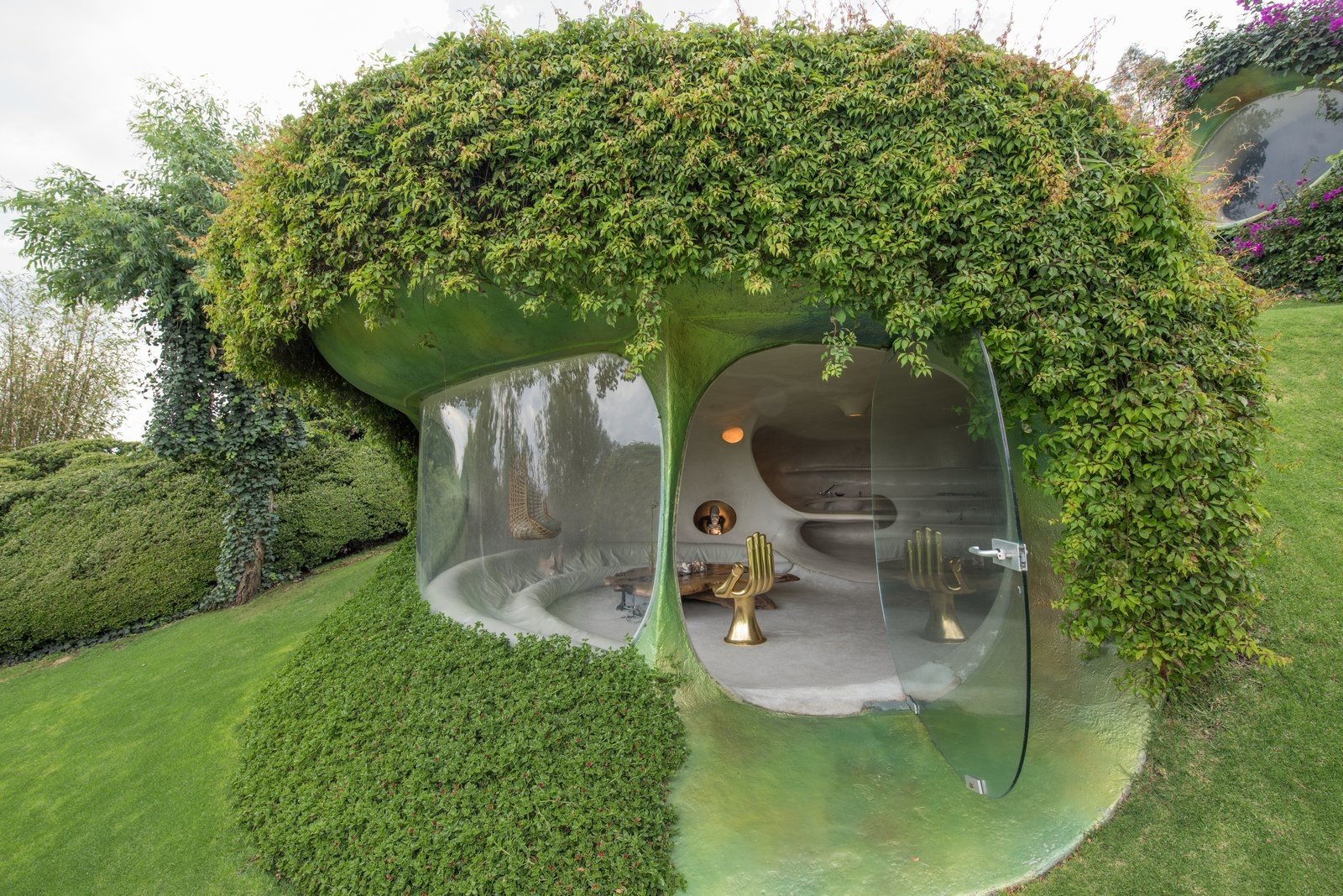#10438. Biomorphic Green Facade: Organic Architecture Merged with Nature
This extraordinary example of biophilic architecture presents an organic structure masterfully integrated into the landscape. The building's facade is designed as a green dome, completely covered with living vegetation, creating the impression of a natural hill or formation.
The most expressive element of the design is the contrast between the natural green shell and the modern glass facade. The semicircular glass panels create a transparent boundary between the external environment and the internal space, while ensuring maximum penetration of natural light. The organic, flowing lines of the structure emphasize its biomorphic concept.
The interior space visible through the glass walls reflects the same philosophy: streamlined shapes, absence of sharp angles, and unusual, almost futuristic furniture in golden hues. The green roof not only serves an aesthetic function but also provides thermal insulation, promotes biodiversity, and absorbs rainwater.
For application in private housing, this approach can be adapted by using partial greening of the roof or walls, creating flowing lines in the facade, and integrating large glass surfaces to connect with the surrounding environment. Even on a smaller scale, elements such as green roofing or vertical gardening can significantly improve the ecological performance of the house and its aesthetic perception.
